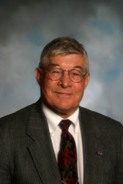Design
Design
Personality
Chart Properties
Your Cross represents the specific theme of your life. This cross embodies your unique potential & the lessons you're here to learn, providing a roadmap to fulfilling your life purpose.
We use the UTC birth time and date to do the calculations required to generate your Human Design chart.
Buy Tokens
Pay as you use, no expiry and no subscription required.Prompt Ideas
Get inspired with some epic prompt ideas.John Diebold's Biography
American businessman and technological visionary, called an “evangelist and prophet of the new electronic technology.” Diebold is considered one of the most influential men in the history of modern industrial technological revolution.
Diebold was an honors student at Swarthmore College, leaving to join the Merchant Marines with which he sailed as a cadet/midshipman in North Atlantic Convoy duty, 1944-45. He earned an engineering degree from the U.S. Merchant Marine Academy and subsequently enrolled in the Harvard University MBA program (Master’s of Business Administration) which he completed in 1951 with distinction. At Harvard, Diebold had been exposed to the teachings of Professor Georges Doriot, whose perspective on manufacturing was thought-provoking to the young man. Diebold went on to become a thought-leader in the budding computer industry and automation, writing widely for the computer trade press in the 1950s, ’60s and ’70s. His book, “Automation” published in 1952 was dedicated to his professor. A visionary work about how computers might be used in industry, it was reprinted by the American Management Assocation in 1983.
After graduate school, he landed a consulting position with a prestigious firm, Griffenhagen and Associates of Chicago. He quickly became known for “Making the automatic factory a reality,” a subject about which he wrote volumes. Founder of The Diebold Group in 1954, his reputation was cemented as an industry expert in the new world of integrating computers into business and industry. In 1967, he started John Diebold Inc., an investment firm.
A year later, 1968, he founded The Diebold Institute for Public Policy Studies, Inc.
In addition to “Automation,” his books include “Making the Future Work,” published in 1984 and “The Innovators,” published in 1990.
Diebold was married twice. His first marriage, which ended in divorce, produced one daughter Joan. He and his second wife Vanessa had a daughter Emma and a son, John.
He died on December 26, 2005, at his home in Bedford Hills, New York. He was 79.
Link to Wikipedia biography
John Diebold
Your Cross represents the specific theme of your life. This cross embodies your unique potential & the lessons you're here to learn, providing a roadmap to fulfilling your life purpose.
We use the UTC birth time and date to do the calculations required to generate your Human Design chart.






